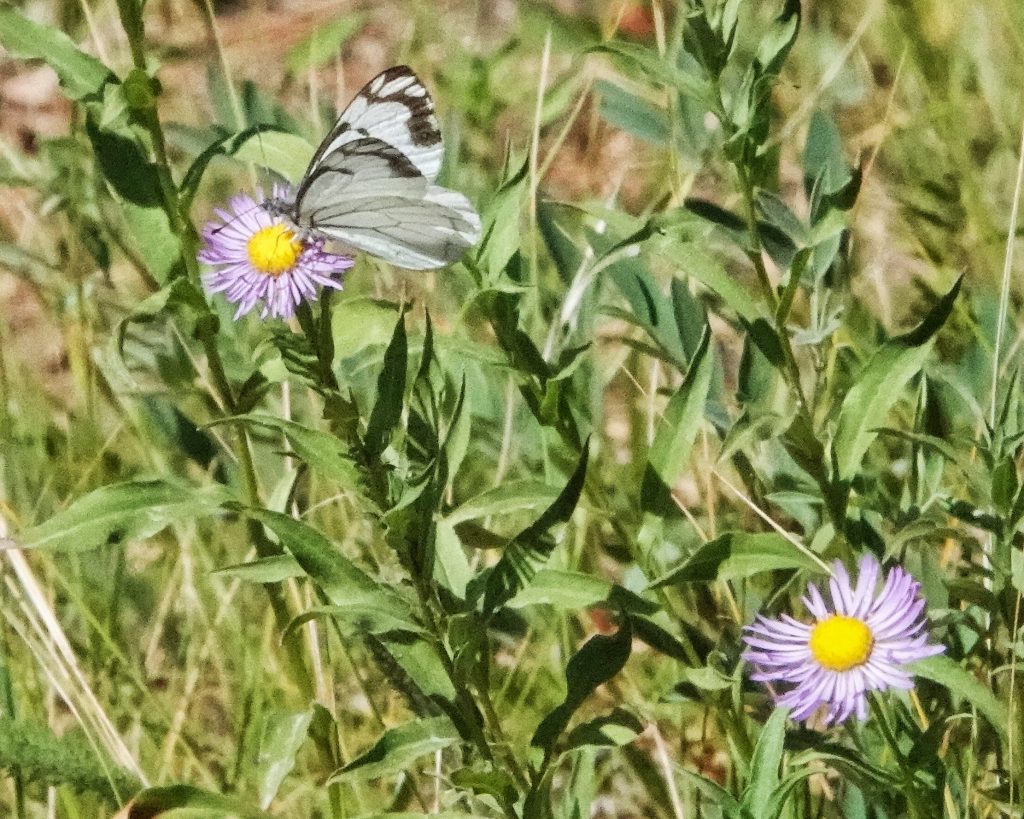
I hope you’ll forgive me for indulging in a bit of synesthesia here, but to my mind the delightful flight of a pine white butterfly can best be described as lilting, like a beautiful melody floating playfully across a sylvan meadow. Thus it was somewhat disturbing to me to see that some, possibly many, in the forestry industry view these wonderful creatures as pests, discounting their beauty and grace, and the sheer joy they bring to many a human heart, even to advocating poisoning them, all because they may, when conditions are perfect and their numbers swell with the bounty of the woods, cost somebody a few dollars.
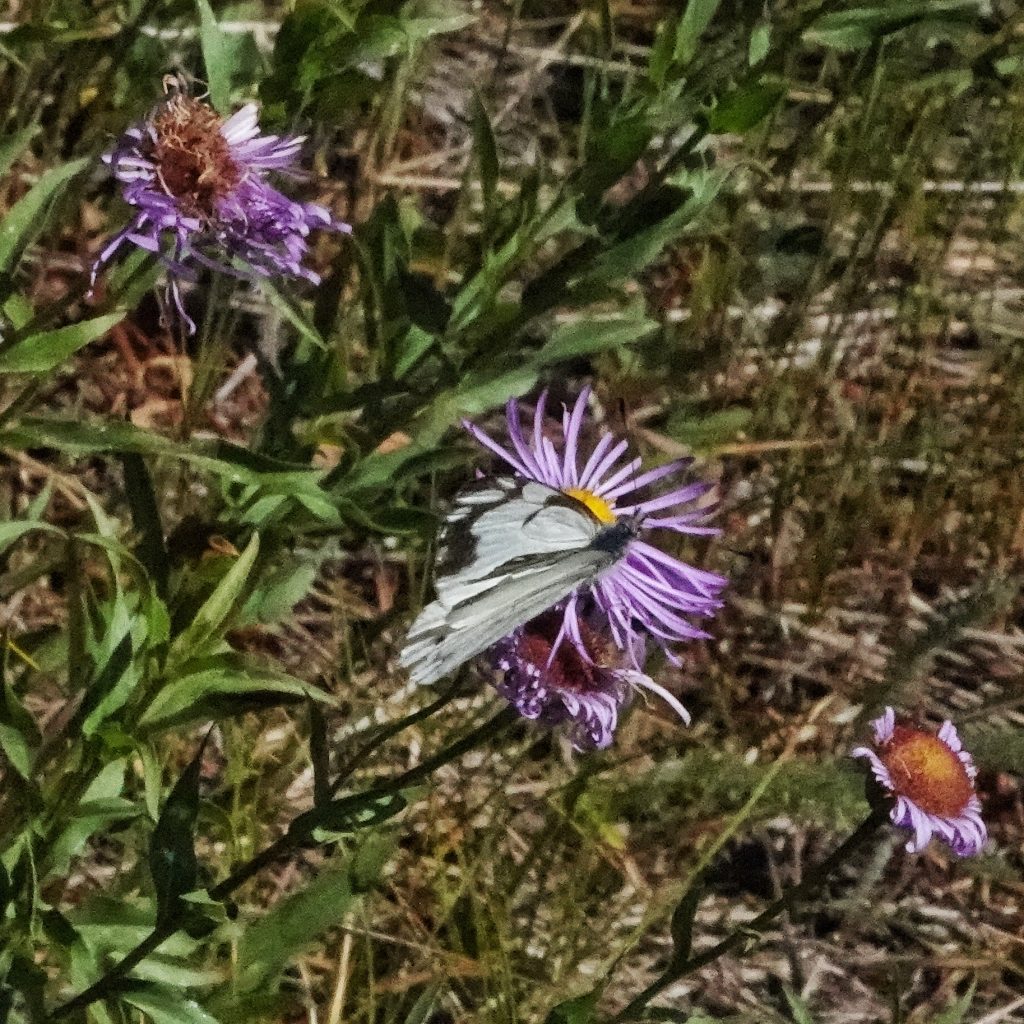
Why not glory in these occasional explosions of abundance, since, as my friend Cynthia Brast-Bormann wrote in her blog, “Larvae typically only feed on old needles, but can become a “pest” when they feed on the new needles and/or population levels are high and the tree is repeatedly defoliated. Natural controls help keep caterpillar populations balanced.” Neophasia menapia – Pine White Butterfly | Bugging You From San Juan Island.. How can we justify murdering these living things merely for the crime of thinning a few wallets already bloated by the destruction of much of their natural habitat, a habitat that was their home for tens of thousands of years before the capitalists showed up and claimed it as their own?
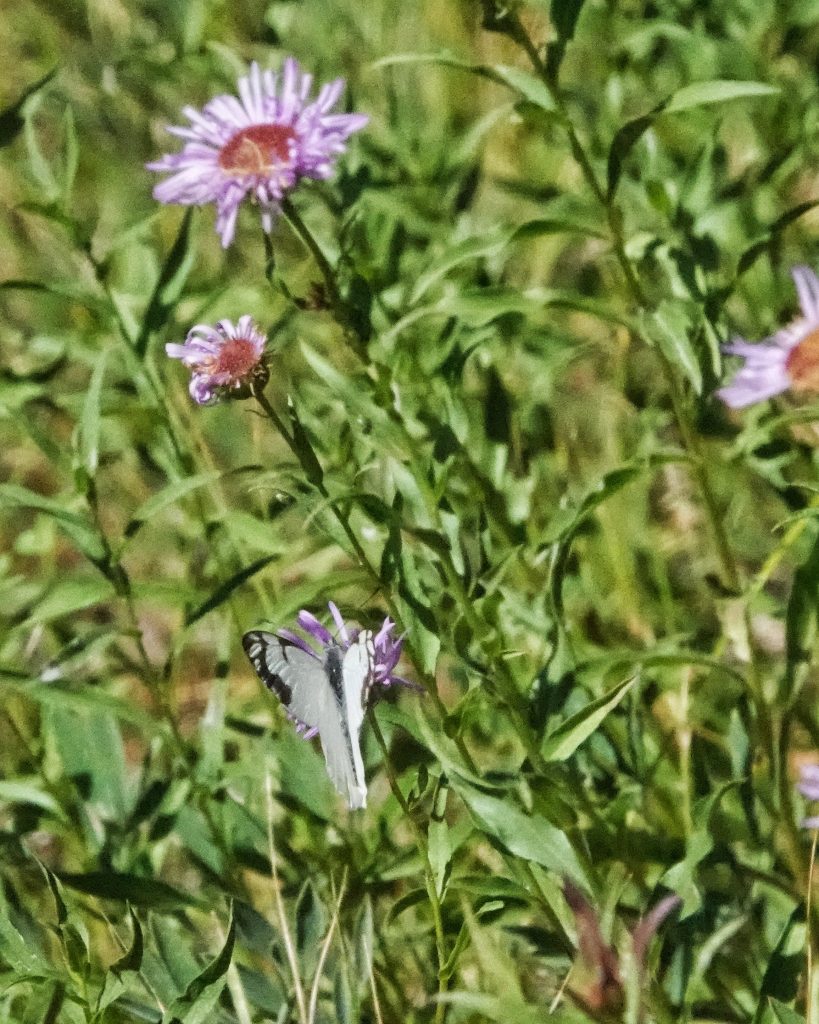
Description– “Wing Span: 1 3/4 – 2 1/4 inches (4.5 – 5.8 cm)…Upperside of forewing has a mostly all white cell and black band along costal margin. Underside of hindwing has black veins. Female resembles male but is duller; hindwings often with red edges and tinged with yellow.” Pine White Neophasia menapia (C. Felder & R. Felder, 1859) | Butterflies and Moths of North America
Similar species– None of our other whites have an all black costa, or black veins on the ventral hindwing.
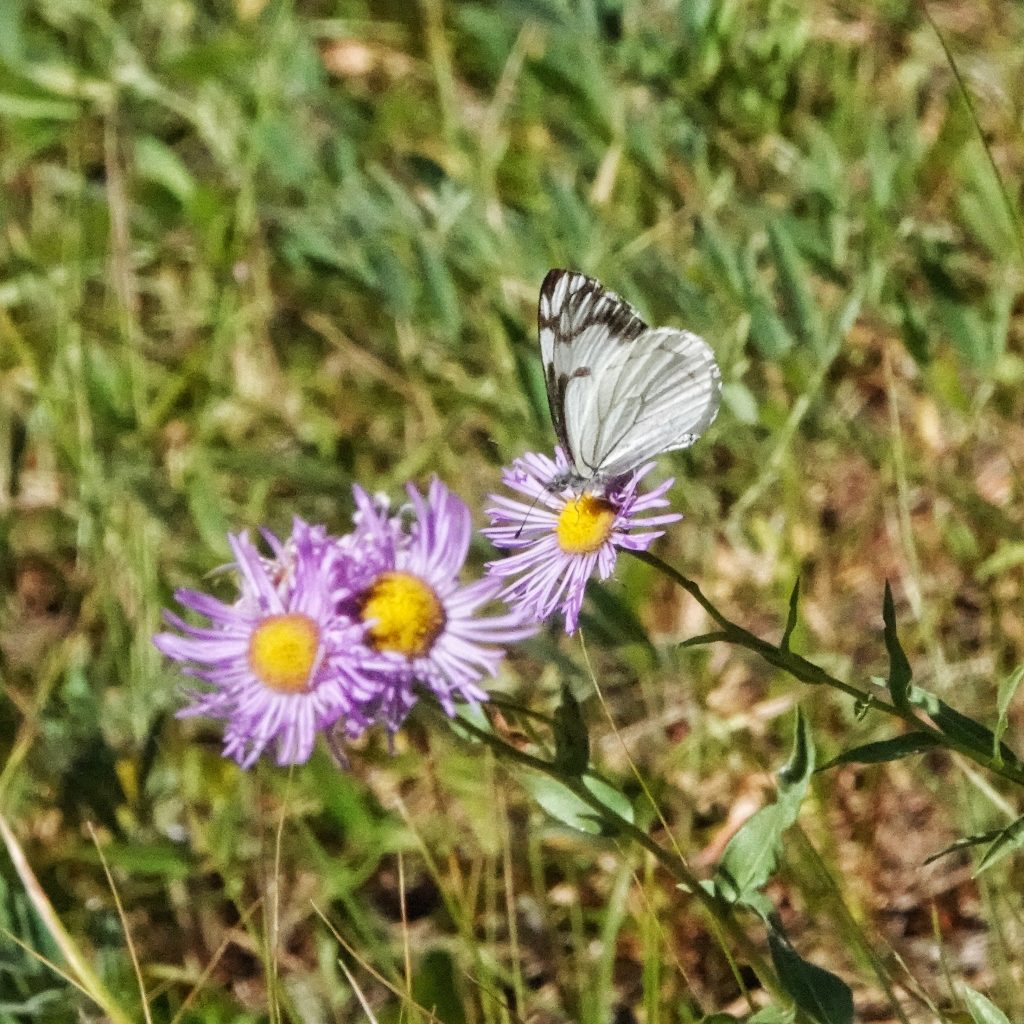
Habitat– “Conifererous forests, sea level to mid-montane; urban neighborhoods with ornamental pines and Douglas-firs…” Pyle/LaBar, “Butterflies of the Pacific Northwest”, 2018
Range– “The white pine butterfly can be found from southern British Columbia and Alberta south to southern California, northern Arizona, central New Mexico and the western most edges of South Dakota and Nebraska.” Pine White Butterfly – Neophasia menapia – NatureWorks; region wide in the PNW in appropriate habitat.
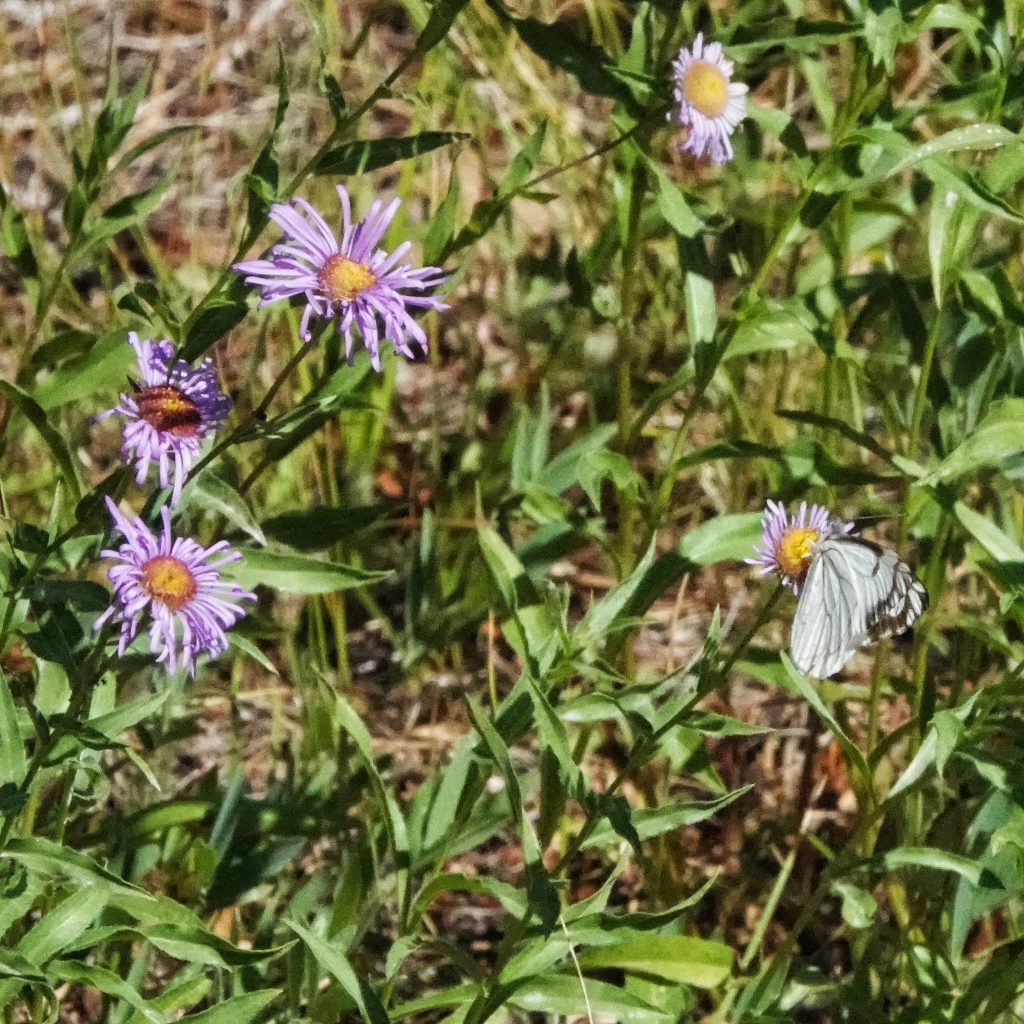
Eats– The primary larval host when available is Pinus ponderosa (Ponderosa Pine), but they are also known to utilize Pinus contorta (Lodgepole Pine), Pinus monticola (Western White Pine), Larix occidentalis (Western Larch), Pseudotsuga menziesii (Douglas-fir), Tsuga heterophylla (Western Hemlock), Abies grandis (Grand Fir), Picea sitchensis (Sitka Spruce), and probably other conifers as well; “Adults feed on flower nectar, including Achillea, Anaphalis, Berteroa, Carduus, Centaurea, Cirsium, Cleome, Erigeron, Grindelia, Heterotheca, Jacobaea, Leontodon, Lepidium, Lobelia, Machaeranthera, Raphanus, Rudbeckia, Senecio, Solidago, Symphyothrichum, and Tanacetum(Pyle 2002; Scott 2014).” Pine White – Montana Field Guide
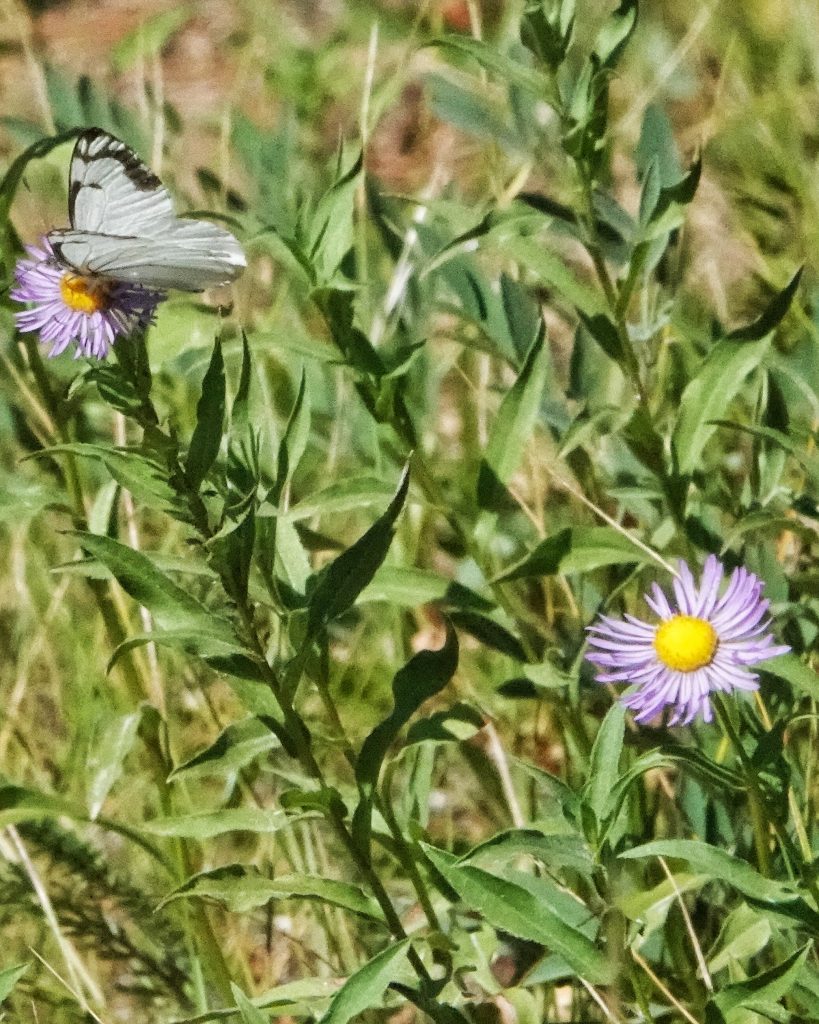
Eaten by– “Several insects, including hemipterans (Podisus spp. and Apoecilus spp.), snakeflies (Raphidia spp.), sarcophagid flies (Agria spp.), and wasps (Ichneumonidae) have been reported preying on different stages of pine butterfly. Decline of the 1922-23 outbreak of this butterfly was attributed to mortality from some of these natural enemies, especially a native ichneumon parasite, Theronia atalantae (Poda).” Forest Pest Insects in North America: a Photographic Guide;adults and larvae also preyed upon by many birds.
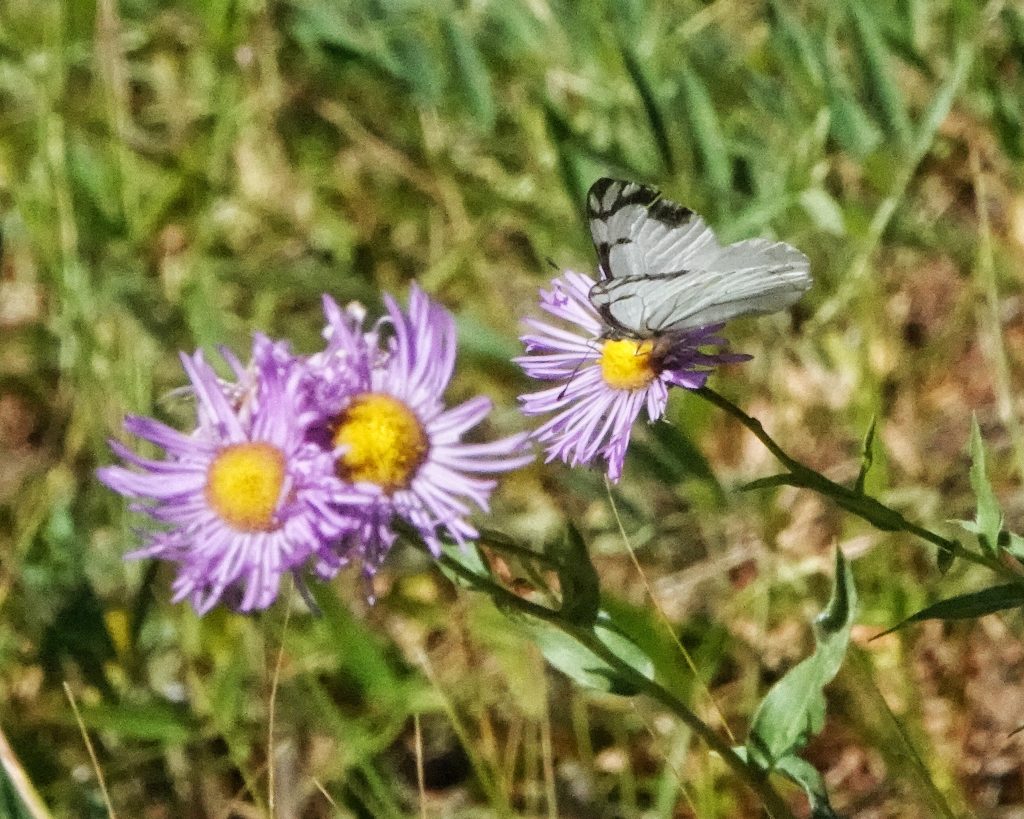
Life cycle– “Females lay eggs in a single row of 3-22 eggs on host plant leaf (needle) near top of tree (Scott 1986). Eggs hatch in about 14-16 days after overwintering and exposure to warming spring temperatures. Develop from L1 instar to L5 instar and pupae in about 63 days, pupation occurs on lower branches of host plant or on ground and adjacent shrubs. L1 and L2 instars gregarious, L3 to L5 instars generally solitary. Eggs overwinter, larvae fed on needles, build no nest (Scott 1979, 1986; Guppy and Shepard 2001; James and Nunnallee 2011). Females often rest in upper conifer canopy, males patrol slowly around host trees throughout the day in search of females (Scott 1975b, 1986; Guppy and Shepard 2001).” Pine White – Montana Field Guide;
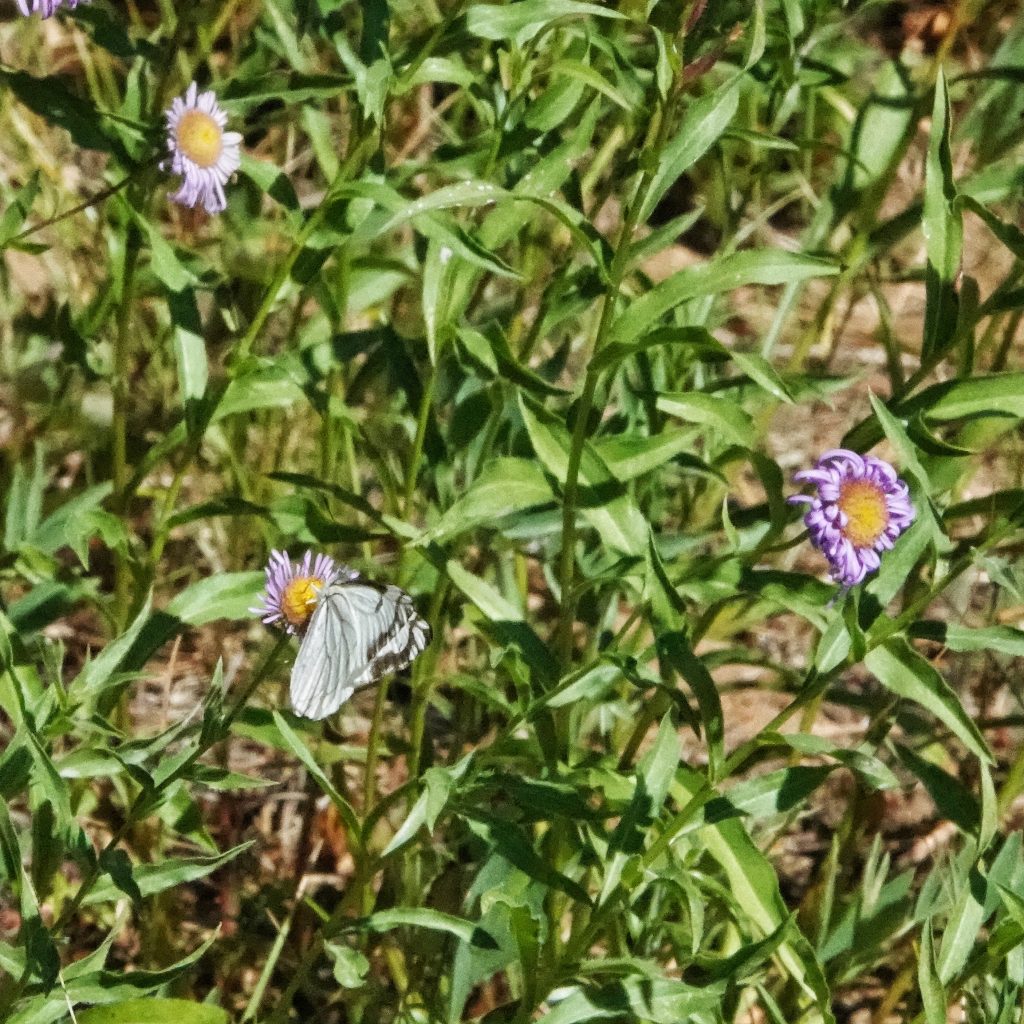
Adults active– Late June to mid October, with a peak in August
Etymology of names– Neophasia is from the Latin words for ‘new phase’, and refers to the perceived similarity between this genus and Leucophasia. The specific epithet menapia may refer to the Latin name for the people of Belgium and the Netherlands, or it may be from the Greek words for either ‘stay/remain’ or ‘force/courage’, but the father/son lepidopterists C. & R. Fielder did not bother to explain themselves.
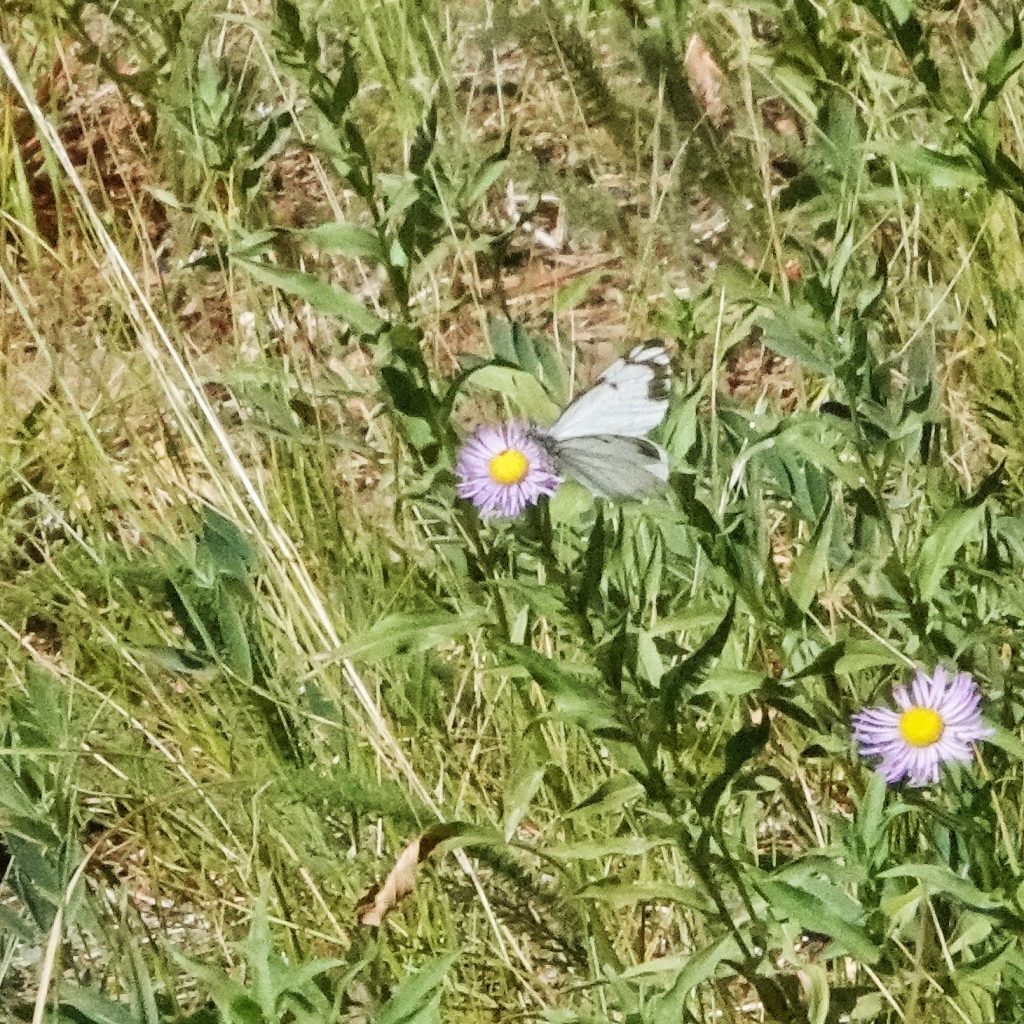
Pine White Neophasia menapia (C. Felder & R. Felder, 1859) | Butterflies and Moths of North America
Pine White Butterfly – Neophasia menapia – NatureWorks
Pine White – Montana Field Guide
Neophasia menapia – Pine White Butterfly | Bugging You From San Juan Island
Species Neophasia menapia – Pine White – Hodges#4187 – BugGuide.Net
https://www.fs.usda.gov/Internet/FSE_DOCUMENTS/stelprdb5347775.pdf
Forest Pest Insects in North America: a Photographic Guide
Neophasia menapia | Art Shapiro’s Butterfly Site
https://en.wikipedia.org/wiki/Neophasia_menapia
